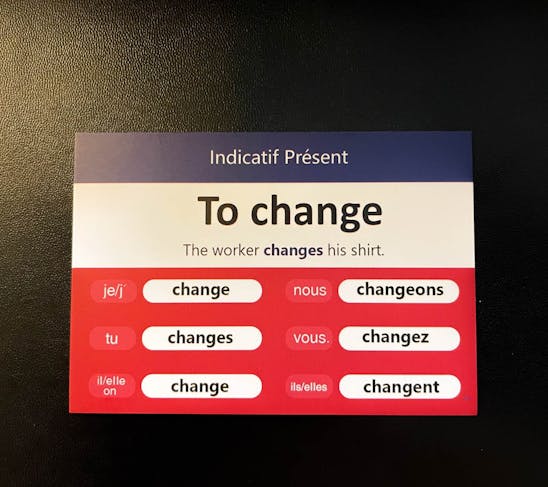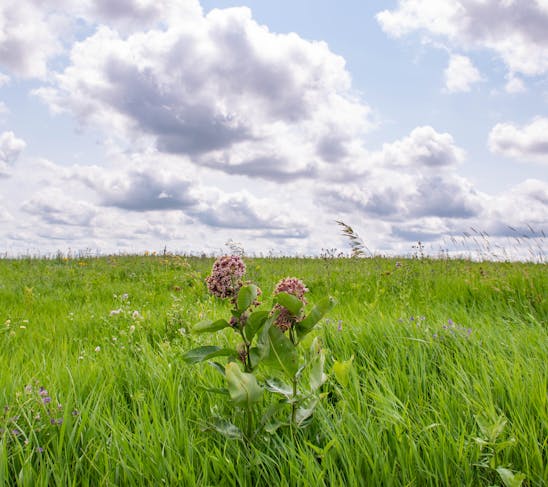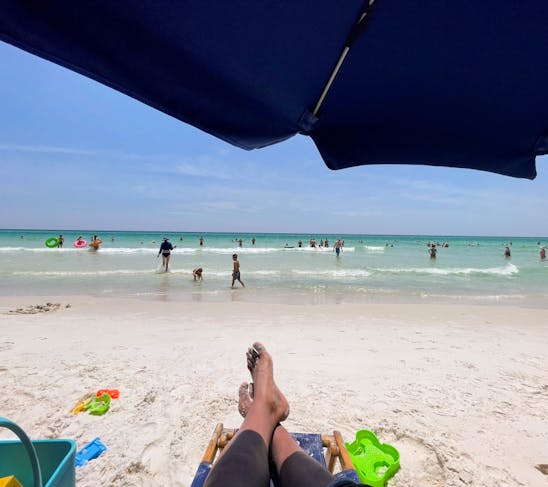It’s noon on Friday, June 12, 2015. I just returned back to the Lookout Inn from Puerto Jimenez, where I stayed last night after my first ever surf lesson at Matapalo’s Pan Dulce (Sweet Bread) Beach. I took the collectivo bus and arrived around 9:30 a.m. at Matapalo, the midpoint between Carate Beach and Puerto Jimenez. The surf was much more laidback than the large swells of Carate, and I had the beach practically to myself for most of the day until the tides receded and a few paddle boarders and surfers headed out to the natural “point break” jutting out from Pan Dulce’s north end.
I did better than I thought; I even rode my first wave on my first attempt, but that was more beginner’s luck than anything, because I replicated the feat only twice more the rest of the two hours I was out there. But, it’s all good. I’m happy I tried. The older I get, the more willing I am to try something at least once—although looking back on what I did on the morning of Saturday, June 6, I’m starting to rethink that philosophy…
Andrey and I headed out at 4:30 a.m. It was still dark outside. I wore a headlight. Andrey gripped a flashlight. There was something surreal about walking through the jungle at night. Many of the animals living inside Corcovado are nocturnal, so the earlier you start, the higher the chances of seeing something you would likely miss during the day. You’re forced to see with your ears as much as you are with your eyes, your senses challenged as much as your nerves.
I shooed away the flies gravitating toward my headlamp, while swiveling my neck back and forth and up and down. My Sony camera dangled around my neck, my trigger-happy finger itching to take a shot. But the forest was quiet. A little too quiet. Besides the three-pound bullfrogs hopping around next to our feet, there was little to be seen as I had hoped.

We reached the Sirena River and took our seats on a piece of driftwood, watching for fins to break through the water’s surface. As the light slowly emerged, we discussed our path back to Carate. Andrey suggested we start by walking along the shoreline. The beach was narrow, and the high-tide waves pushed their way up to the jungle’s edge. We ran in intervals, timing the sets as they crashed onto the shoreline until we eventually arrived at the swollen banks of the Claro River.
It didn’t resemble the river we had crossed the day before. It was low tide then. Sixteen hours later, not so much. The river looked to be nearly twice as wide, growing wider as the Pacific poured into its open mouth. The sun rose above the jungle canopy, its reflection shimmering off the water’s surface. I snapped a few pictures, oblivious to the fact the Andrey intended to cross.
I felt uneasy about the whole situation, and I expressed my concerns. I was in no rush to enter the water. Not after the crocodile we saw the day before. If there was one, then there had to be others. I was also concerned about the bull sharks known to enter the river at high tide. Anyone who grew up in South Texas near the Gulf of Mexico like I did has heard stories of their aggression.
Andrey proceeded to check the water’s depth. One step off dry land, and the river swallowed his body up to his chest. “We cannot cross here,” he said. “It’s too high!” I asked him when the tide was scheduled to retreat. He said maybe two hours, possibly more. I told him we should wait. He countered by saying there was another crossing further upstream.
Ok. I was willing to listen to all available options, assuming that “upstream” meant we would find a narrow crossing similar to the day before, but that wasn’t the case. We proceeded to walk less than 40 yards, where the river was clearly the widest. Andrey crept up to the water’s edge, and I said, “HELL NO!”

My comment sparked a quick debate, but being the consummate professional, Andrey did his best to talk me through it. He said there was nothing to worry about. That crocodiles and sharks are less aggressive in Corcovado because they have a steady food source year round. That may be the case, I thought, but a crocodile is still a crocodile, and a shark is still a shark, and the Claro River was anything but clear after the heavy downpour the night before. It was impossible to know what was lurking underneath.
I asked Andrey if he thought any other groups had crossed. He looked down. There were no other footprints. We would be the first. He entered the river, testing the levels once again. The water came up to his waste. He said it may be deeper toward the middle, but was optimistic we could cross. I said maybe you, but not me. He then suggested that he cross first to show me it was safe, and then he would come back to get me. He said he had crossed many times before and that we would have no problems. Still, I was unconvinced. Finally, he unsheathed his machete and assured me that nothing was going to happen.
As I stood there on the banks of the Claro River, my mind seesawing back and forth, I finally looked at Andrey and said, “Let’s go.” I don’t think he expected to hear my response. If he did, he gave me no time to change my mind. I put my camera into the safety of my backpack. Taking a picture half way through was the last thing on my mind. And since I didn’t know how deep the water would be, there was no point to risk dropping it into the river and losing all of my photos.
Andrey entered first, his machete pointed down toward the water. Then me. The water quickly shot up to our waste. We moved further until it settled above our belly buttons, easily four feet deep. I saw Andrey grab the top of his backpack and lift it out of the water, so I did the same. The river was a few blocks wide, and each terrifying step made me question what I was doing.
Every time a vine dragged against my feet, I paused in fear. About half way through, I said to Andrey, “Rapido!” He looked over at me and replied, “Not too fast.” I never asked him why. Maybe it was because he was walking on his bare feet. Or maybe he didn’t want to attract too much attention to ourselves. Either way, I just stayed close to him. Close to the machete.

I was waiting for something to go wrong. For some hungry mouth to bite down on one of my exposed legs. To make matters worse, the final section was the deepest, and the point where Andrey decided to tell an untimely joke. He pointed and said, “WHAT’S THAT?” My heart sank. “Are you serious?” I asked. He smiled. I wasn’t amused. Not in the slightest. I jumped out as fast as I could, my body shaking. I then pulled out my camera and snapped a few shots of where we had crossed, and now that I was safe on the other side, I couldn’t help but regret not taking a picture halfway through.
I would like to think the experience was the scariest of my life, but it’s not. That moment came back in February 2007 when my twin brother Justin and I were assaulted by four guys in a parking garage. I bore the worst of the brunt after one of them punched me from behind. The blow knocked me unconscious. To add insult to injury, he proceeded to kick my face repeatedly as I lay motionless on the ground.
All I remember from that night was waking up in the middle of an ambulance. I can’t even begin to describe the pain. I struggled to sit up, not believing that what I was experiencing was real. “Don’t move! Your neck might be broken,” yelled the paramedic. That was the scariest moment of my life.
The doctors said I had bleeding and swelling in my brain. My nose was broken. My cheek cracked. My face unrecognizable—swollen to the size of a beach ball. It took me months to recover physically. Mentally and emotionally was a different story. To this day, I still hear stories of similar incidents where the victim wasn’t so lucky. Many of them are forced to live with some kind of debilitating brain injury. Others, unfortunately, don’t survive at all.
I look back now and can’t help but be thankful that things happened the way they did. I often joke that a good kick in the head was exactly what I needed at that time in my life. Shortly thereafter, I was blessed with the idea of Maven the raven. I later quit my job, and Justin and I co-founded our own education nonprofit organization named “Impossible Possibilities.” It gave me a new hope to move forward with my life.
Sometimes, being scared to death can be a good thing. It helps you appreciate the life you have. And that’s exactly how I felt when I was back on dry land after crossing the Claro River. My adrenaline was sky high, but I was quickly reminded that danger can strike at any time. As Andrey ducked underneath a fallen tree, he turned to me and said, “Watch out!”

I felt a sharp sting on my arm. I didn’t know what it was. All I heard was Andrey yelling, “RUN!” so I took off as fast as I could. I had unknowingly disrupted a wasp’s nest with my backpack, and my right arm paid the price for the misstep. My arm burned the same way I remembered when I was last stung as a child, but Andrey had a tip: “Pee on it.”
I knew urine was a remedy for jelly fish stings, but I had never heard anything about wasps. I looked at him, wondering if he was telling the truth, but since I had nothing to lose, I gave it a try and immediately felt the pain subside. (A few days later I suggested the remedy to a woman who was stung by non-poisonous scorpion, but she wasn’t as willing as me.)
It had been an adventurous morning thus far, and I was still holding out hope that we would see a cat before our journey came to an end. We moved much slower through the dense areas of forest, taking our time to scan the canopy with our binoculars, but still no luck. Every mile we walked, every hour that passed, I knew our chances were growing slimmer and slimmer.
We saw other animals like a family of anteaters, more macaws, but overall there were fewer sightings than the day before. The trails were much busier with adventure seekers and wildlife lovers in search of a story all their own, which reminds me of another of Andrey’s. He said a guide from San Jose had taken a woman into the park. She made the mistake of wearing a bright-orange shirt, which eventually attracted the attention of a puma. As the puma stalked her, she unwisely climbed a tree, which is probably the last place you want to be with an agile jungle cat.
The woman cried and screamed for more than an hour as the cat waited patiently below. The guide eventually suggested that the color of the woman’s shirt was to blame, so she removed it and tossed it down. The cat made quick work of the shirt, ripping it apart before disappearing into the forest.

Fortunately, I don’t have a story like that of my own to tell. I’m just thankful that I escaped unscathed, and that I’m able to sit here and finish this last entry about my unforgettable trip. Corcovado is not for the faint of heart, but those searching for an opportunity to experience one of the last few pristine wildernesses left in the world, then this is your place. I assure you: you won’t be disappointed.
As for Andrey, I honestly couldn’t have hand-picked a better guide. He is one of the most fearless dudes I’ve ever met. He said he planned to continue working as a guide for the immediate future but eventually hoped to transition into an English teacher, so he could help educate a new generation of Costa Ricans. Maybe, one day, Maven the Raven: Tree of Life will be translated into Spanish. If so, I’ll be sure to send copies to Andrey’s class. As for me, I have a book I need to finish, and another adventure in Alaska calling my name!
Follow me on Instagram at @Joshua_Maven or @HonchotheVan, on Twitter @MaventheRaven or Facebook at Facebook/TheLastImperial.
Pura Vida
Midlife Revival
It’s Friday, July 11, 2025, and I just completed my second French lesson of the week. I’ve been working with an online tutor for the past six months in hopes of communicating with my 22-month-old son as he advances in his mother’s native tongue. I’ll be honest, learning a new language has proven quite the challenge. My tutor insists that I’m making progress, but it rarely feels that way to me.

Postcards to Samuel
It's 8:00 p.m. on Wednesday, July 31, 2024, and I'm trying something a little different with this post. Instead of my usual blog format, I compiled a series of postcards that I wrote to my 10-month-old son, Samuel, during a two-week road trip I recently took to the Great Lakes. I plan to give him these postcards, along with others from future trips, when he's older in hopes that they will inspire him to chase his own dreams, whatever those might be.

False Summit
It’s 12:00 p.m. on Sunday, July 30, 2023, and I’m lounging at the beach enjoying the white sands and green waters of Florida’s Emerald Coast. Today is my 40th birthday and a relaxing getaway is exactly what I needed after a two-week road trip out west, where I hiked the highest peaks of Colorado and Arizona. The reasoning behind my latest excursion was simple: if I’m going to be “over the hill,” then I might as well be standing on top of a mountain.

